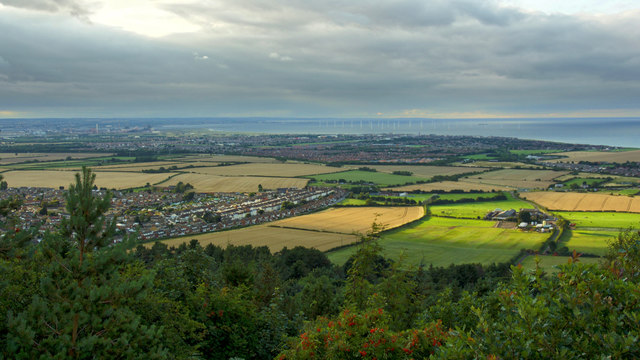New Marske
Introduction
The photograph on this page of New Marske by Mick Garratt as part of the Geograph project.
The Geograph project started in 2005 with the aim of publishing, organising and preserving representative images for every square kilometre of Great Britain, Ireland and the Isle of Man.
There are currently over 7.5m images from over 14,400 individuals and you can help contribute to the project by visiting https://www.geograph.org.uk

Image: © Mick Garratt Taken: 14 Aug 2018
A rare visit to Beacon Moor, the high point above Errington Wood giving fine views over New Marske to the left and Redcar in the distance. Many believe the name, New Marske, derives from the housing built in the 1960s/70s to cater for the expanding industries of Teesside, but the name actually dates from the 19th-century when J.W. Pease built the village for his workers at his Upleatham Ironstone Mine. His rows of terraced cottages can be seen surrounded by the modern houses, the nearest row of which are on Pontac Road. These and the road are built on the course of the inclined railway to the mine. Pontac Road takes its name from Pontac Farm on the right. At the end of the road, a slight kink, and then you can see a hedge line. This is the route of the Upleatham Branch Railway and can be traced to where it joined the Darlington & Saltburn Branch of the North Eastern Railway. The main drift to Upleatham Ironstone Mine is just out of shot and, in any case, would be hidden by the trees. Operations began in 1851 soon after the Eston Mine was established making it one of the oldest mines in Cleveland. It was leased by the Derwent Iron Company from Lord Zetland. The ore was sent to Consett Iron Works and Shotley Bridge. J.W. Pease & Company took over in 1857. By 1900 the mine was becoming exhausted and finally closed in 1923. From my daily photo blog http://www.fhithich.uk/?p=20084

